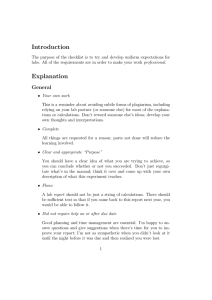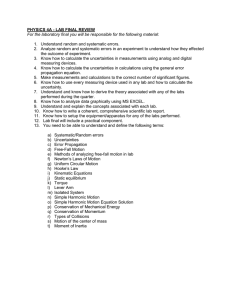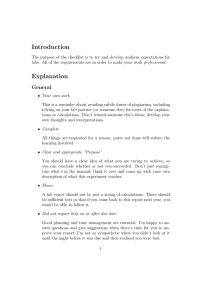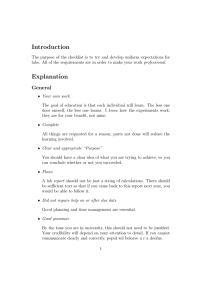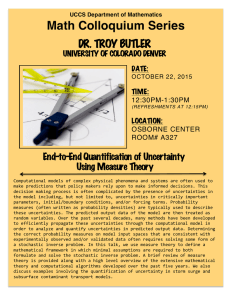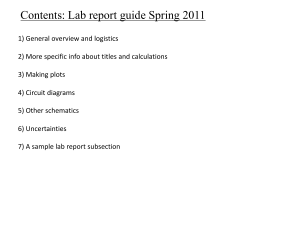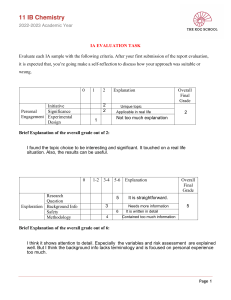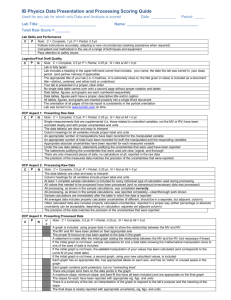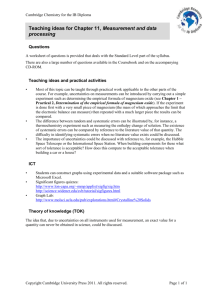Lab Format Checklist (V2.20bg) A. General 1. Your own work
advertisement
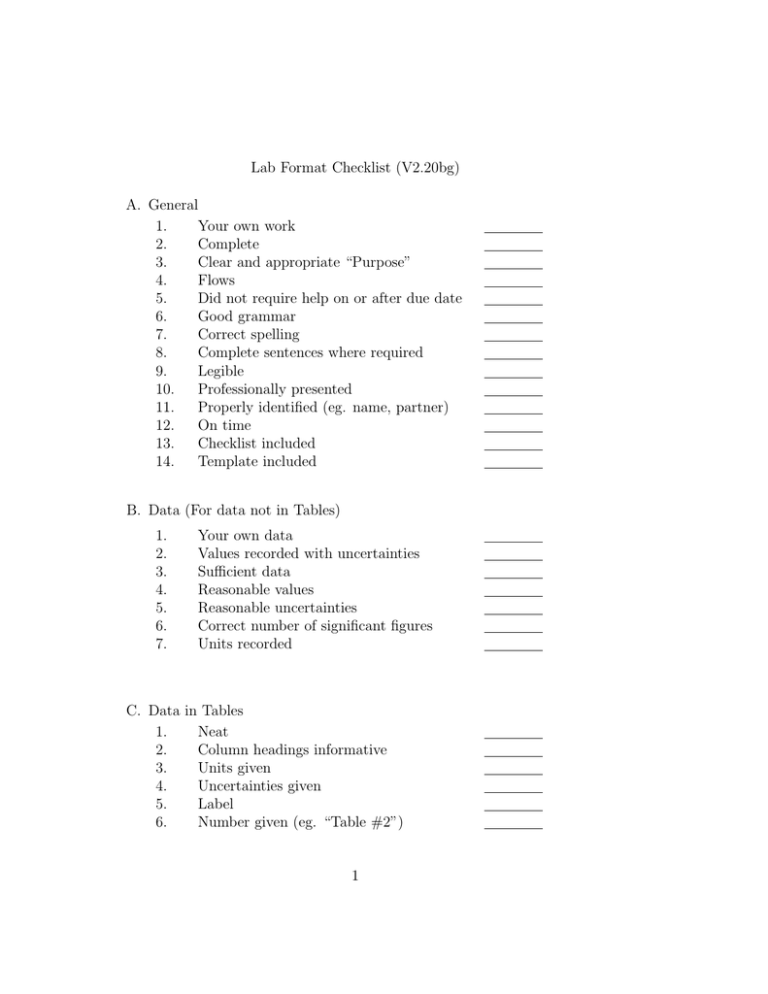
Lab Format Checklist (V2.20bg) A. General 1. Your own work 2. Complete 3. Clear and appropriate “Purpose” 4. Flows 5. Did not require help on or after due date 6. Good grammar 7. Correct spelling 8. Complete sentences where required 9. Legible 10. Professionally presented 11. Properly identified (eg. name, partner) 12. On time 13. Checklist included 14. Template included B. Data (For data not in Tables) 1. 2. 3. 4. 5. 6. 7. Your own data Values recorded with uncertainties Sufficient data Reasonable values Reasonable uncertainties Correct number of significant figures Units recorded C. Data in Tables 1. Neat 2. Column headings informative 3. Units given 4. Uncertainties given 5. Label 6. Number given (eg. “Table #2”) 1 D. Least Squares Fits 1. 2. 3. 4. Points used for fit clearly identified Results given meaningful names Correct units for slope and intercept Correct indication of “large” or “small” scatter E. Graphs 1. 2. 3. 4. 5. 6. 7. 8. 9. 10. Title meaningful Correct graph type and orientation Plotting data in table Axis labels meaningful Correct axis units Points not connected Error bars in both dimensions or note if too small Error bars correct size Line of best fit shown without markers Number given (eg. ”Graph #3) F. Calculations and Results 1. Any required derivations done correctly 2. Analysis explained where needed 3. Correct formulas used 4. Sample calculations shown where needed 5. All required values calculated 6. Uncertainties included 7. Units included 8. Correct number of significant figures 9. Appropriate use of standard form 10. Theoretical or reasonable value 11. Agreement of experiment with theory 12. Questions reasonably answered 2 G. Error Discussion 1. Sources listed are significant 2. Sources are prioritized 3. Correct explanations of consequences of systematic errors 4. Evidence: ie test where possible or bound where can’t test 5. Reasonable suggestions for improvement H. Conclusions 1. Relate to purpose 2. Major results stated 3. Comparisons made where appropriate 4. Agreement noted when found 5. Percent difference calculated only when quantities don’t agree I. References 1. Source(s) of constants listed J. Methods 1. All steps clearly described 2. Paragraph format 3. Past tense K. Introduction 1. Rationale for research given 2. Historical/experimental context given 3. Good references 3
